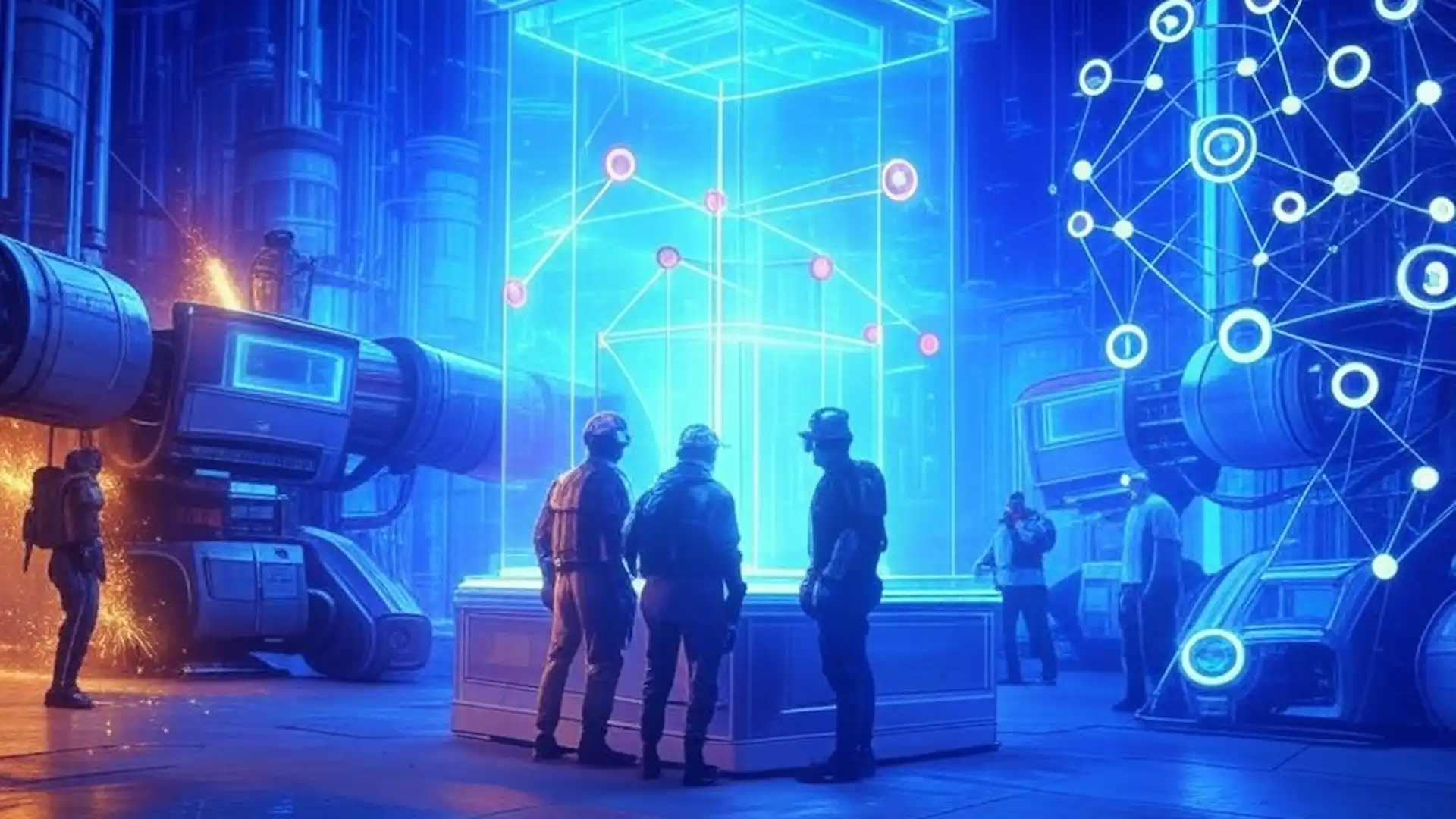Distributed Ledger and Decentralization Explained

In the world of blockchain technology, two concepts stand at the very foundation: distributed ledgers and decentralization. These principles revolutionize how we store, validate, and share information in the digital age. This guide explores these fundamental concepts in detail, explaining how they work and why they matter.
What Is a Distributed Ledger?
A distributed ledger is a database that is consensually shared, replicated, and synchronized across multiple sites, institutions, or geographies. Unlike traditional databases, distributed ledgers:
- Exist across multiple locations simultaneously
- Have no central administrator or centralized data storage
- Are maintained by multiple participants in a network
Think of a traditional ledger as a book of financial records kept by a single accountant. Now imagine that same book existing simultaneously in hundreds or thousands of locations, with every copy being identical and updating in real-time whenever a new entry is added. That’s the essence of a distributed ledger.
Key Characteristics of Distributed Ledgers
Distributed ledgers have several defining features that separate them from conventional record-keeping systems:
- Synchronized Copies: All participants possess identical copies of the ledger, ensuring everyone sees the same information
- Peer-to-Peer Transmission: Information moves directly between participants without requiring intermediaries
- Consensus Mechanisms: Network participants agree on the validity of records through predetermined rules rather than trusting a central authority
- Transparency: All changes are visible to network participants, creating an auditable history of information

Understanding Decentralization
Decentralization refers to the distribution of power, control, and decision-making away from central authorities and toward a broader network of participants. In the context of blockchain and distributed systems, decentralization means:
- No single entity has complete control over the network
- Network operation relies on distributed consensus rather than central authority
- System governance is shared among participants rather than dictated by a central body

Three Dimensions of Decentralization
Computer scientist Vitalik Buterin (Ethereum’s co-founder) identified three key dimensions of decentralization:
- Architectural Decentralization: How many physical computers make up the system and how many can fail while the system continues functioning
- Political Decentralization: How many individuals or organizations ultimately control the computers that make up the system
- Logical Decentralization: Whether the interface and data structures appear more like a single monolithic object or an amorphous swarm
Benefits of Distributed Ledgers and Decentralization
The shift toward distributed and decentralized systems offers numerous advantages:
Enhanced Security
- No Single Point of Failure: Attacking a distributed system requires compromising many points simultaneously
- Cryptographic Protection: Data is secured through advanced cryptography
- Immutable Records: Once information is recorded and confirmed, it becomes extremely difficult to alter
Increased Transparency
- Open Verification: Anyone can verify transactions without relying on trusted third parties
- Auditable History: Complete transaction history is preserved and accessible to participants
- Reduced Information Asymmetry: All participants have access to the same information
Reduced Costs and Friction
- Disintermediation: Removal of middlemen reduces costs and increases efficiency
- Automated Trust: Trust is established through technology rather than institutional reputation
- Streamlined Processes: Direct peer-to-peer interaction simplifies many processes
Greater Resilience
- System Survivability: The network continues to function even if some participants fail or leave
- Censorship Resistance: No central authority can unilaterally censor or block transactions
- Operational Redundancy: Multiple copies of data ensure nothing is lost if some nodes go offline

Challenges and Limitations
Despite their advantages, distributed and decentralized systems face several challenges:
Scalability Issues
- Processing transactions can be slower compared to centralized alternatives
- As networks grow, maintaining consensus becomes more resource-intensive
- Balancing decentralization with performance remains an ongoing challenge
Governance Complexity
- Decision-making processes can be more complicated without central authority
- Protocol upgrades require broad consensus rather than executive decisions
- Disagreements can lead to contentious “forks” where the network splits
Energy Consumption
- Some consensus mechanisms (particularly Proof of Work) require significant energy
- Environmental concerns have prompted exploration of more efficient alternatives
Regulatory Uncertainty
- Decentralized systems often operate across jurisdictional boundaries
- Regulatory frameworks are still evolving to address these new technologies
- Compliance can be challenging when no single entity controls the system
Real-World Applications
Distributed ledgers and decentralization principles are being applied across numerous industries:
Financial Services
- Cross-border Payments: Faster, cheaper international money transfers
- Asset Tokenization: Representing real-world assets on blockchain
- Decentralized Finance (DeFi): Financial services without traditional intermediaries
Supply Chain Management
- Product Provenance: Tracking items from manufacture to delivery
- Inventory Management: Real-time visibility across supply networks
- Fraud Prevention: Verifying authenticity of goods
Healthcare
- Product Provenance: Tracking items from manufacture to delivery
- Inventory Management: Real-time visibility across supply networks
- Fraud Prevention: Verifying authenticity of goods
Government Services
- Identity Management: Self-sovereign digital identity systems
- Voting Systems: Transparent, verifiable election processes
- Land Registries: Immutable property ownership records
The Future of Distributed Systems
As these technologies mature, we can expect to see:
- Increased Interoperability: Better communication between different distributed ledgers
- Scalability Solutions: New approaches to handle greater transaction volumes
- User Experience Improvements: More intuitive interfaces making the technology accessible to non-technical users
- Hybrid Models: Systems combining centralized and decentralized elements for optimal efficiency
Conclusion
Distributed ledgers and decentralization represent fundamental shifts in how we approach data management, trust, and coordination in the digital world. By removing central points of control and creating systems where trust is established through technology rather than institutions, these concepts are reshaping industries and creating new possibilities for collaboration and value exchange.
Understanding these foundational principles is essential for anyone looking to grasp the significance of blockchain technology and its potential impact on our digital future. As these technologies continue to evolve, they promise to redefine our relationship with data, authority, and trust in profound ways.


